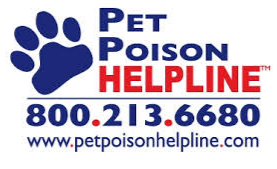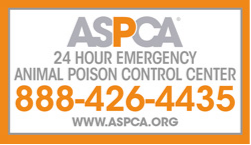Plant Toxins - Can I Keep This Lily?
- Animal Ark Team

- Mar 24, 2022
- 3 min read

We are back again for another section of Pet Poison Prevention Awareness Month here at the Ark to talk about common plants! Have a garden at home? Check out the blog below to see what's safe to keep around your animals (a note from our doctors: we don't recommend any plants be kept near pet birds!).
The first plant on our list is Aloe Vera. A lot of us have Aloe in our home for many different at-home remedies (making homemade hand sanitizer is probably the most common right now but we also use raw Aloe for sunburns) but it can be very harmful to our pets. The major concerns that we have with Aloe are water and electrolyte imbalances as well as generalized GI upset and anorexia (unwillingness to eat).
Lilies (not Peace Lilies as they are not true Lilies) are also a common spring plant that can cause huge issues for cats especially. Lilies, even ingested in small amounts can cause severe kidney damage and kidney failure. While we recommend not keeping lilies in your house at all if you have cats, if you do keep them and your cat chews on the leaves, please be sure to rinse their mouth out and bring them to a veterinarian immediately along with a sample of the flower that they ate for proper identification.
Most pet owners are not honest when their pet gets into our next toxic plant: Marijuana (and - to an extent - CBD). Currently, cannabinoids (including CBD) are not legal for use in animals in North Carolina. Veterinarians across the world are doing a lot of research to see if any cannabinoids will be effective in animals but right now the results are inclusive. That being said, we at Animal Ark will not recommend the use of CBD of any type in animals. Marijuana itself, however, can be highly toxic for your pets. Common symptoms can include increased heart rate, seizures, coma, and even death if not treated.
We are not obligated by any law to report Marijuana ingestion in pets so we do ask our clients to please be honest with us if your pet consumes any illegal drugs so that we can treat them properly.
This next group is large and includes tulips bulbs, azalea/ rhododendrons, castor beans, oleander, kalanchoe and yew. Above are some pictures of one of each species just to give you an example of what some of these plants look like. This group of plants can cause some big cardiac abnormalities, convulsions and depression of the nervous system. Since there are many species in this group - please bring a photo of the plant you pet ate as well as any leaves so that we can better identify it.
The next group of plants are common around Easter and include amaryllis, chrysanthemum and english ivy. This is another group that includes general GI upset, depression, anorexia and some tremors. These are common plants that are gifted to people and that cats find to be very tasty.
The next toxic plant is Sago Palm. This is generally found closer to the coast but some people do keep them at their homes in our area and further inland. One big issue that pets can run into is foreign bodies from eating the nuts. This can also cause seizures, depression and liver failure in pets. If you keep any nut producing trees, please be sure to gather any fallen nuts and remove them from your home or yard.
Autumn Crocus is probably one of the more deadly plants on our list. These can cause multi organ damage and bone marrow suppression in addition to bloody vomit. While we recommend contacting your Veterinarian if your pet consumes anything - this is one that you also need to immediately need to contact ASPCA Poison Control or Pet Poison Helpline for further instruction.
The last group of major toxic plants is Mushrooms. These will grow in all of our yards all year round and our dogs always find them to be delicious. The main symptoms that we run into with mushrooms are neurologic signs and kidney and liver damage and failure.
As with any ingestion of an inappropriate food item, it is important to contact your veterinarian immediately for further instructions. If you believe that your pet may have ingested a toxic substance,




link link link link link link link link link link link link link link link link link link link link link link link link link link link link link link link link link link link link link link link link link link link link link link link link link link link link link link link link link link link link link link link link link link link link link link link link link link link link link link link link link link link link link link link link link link link link link link link link link link link link link link link link link link link link link link link link link link link link link link link link link link link link link link link link